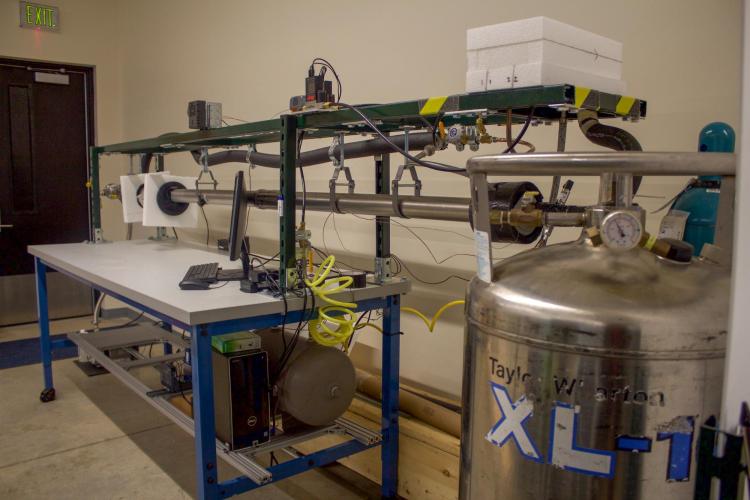Graduate researchers Andrew Mahon (left) and Joe Pointer (right) have developed the High-Altitude Calibration Tunnel (HiCaT) in order to simulate high-altitude atmospheric conditions for the calibration of scientific instruments. This small-scale wind tunnel, funded by the AFOSR's Multidisciplinary Research Program of the University Research Initiative (MURI) grant, "Integrated Measurement and Modeling Characterization of Stratospheric Turbulence” will be used by the Hypersonic Flight In the Turbulent Stratosphere (HYFLITS) team to design and calibrate fine-wire anemometers for in-situ sensing of turbulence fluctuations in the atmosphere over an altitude range of 20 to 40 km.

Andrew Mahon (left) and Joe Pointer (right)
Development of the HiCaT:
The researchers began development of HiCaT, which is located in the Colorado Aerodynamics Laboratory, in October of 2017. Using HiCaT, anemometers will be calibrated prior to integration into high-altitude balloons that will be deployed at various sites across the nation throughout the year. Balloon deployment sites, such as those along the Western slope and Gulf coast, are selected in an effort to study the effect of Earth topology on conditions in the stratosphere.

The turbulence data collected from these balloon flights will assist in the development of high-fidelity atmospheric models, as well as provide valuable input for simulations of future hypersonic flight in the stratosphere.

photos by Xavier C.

